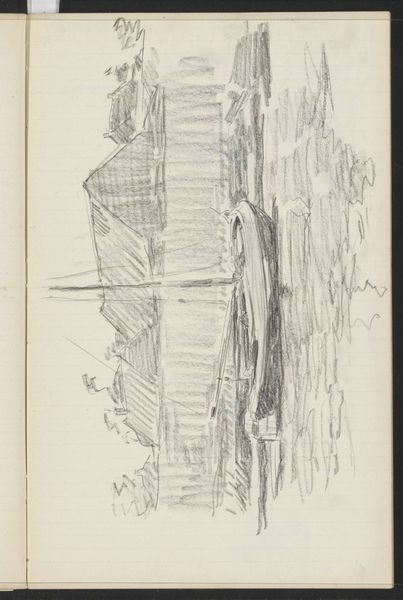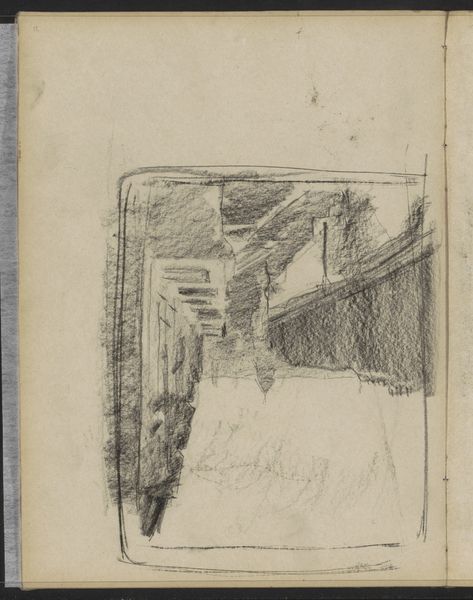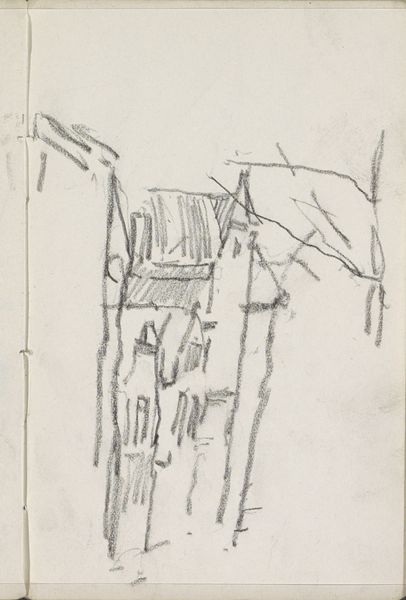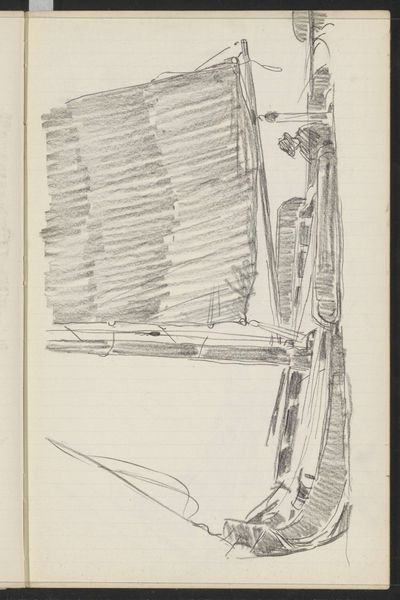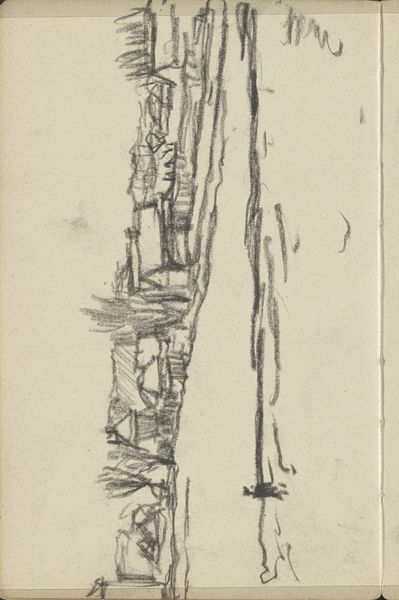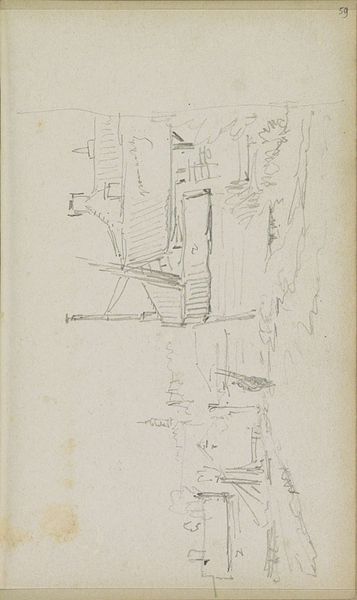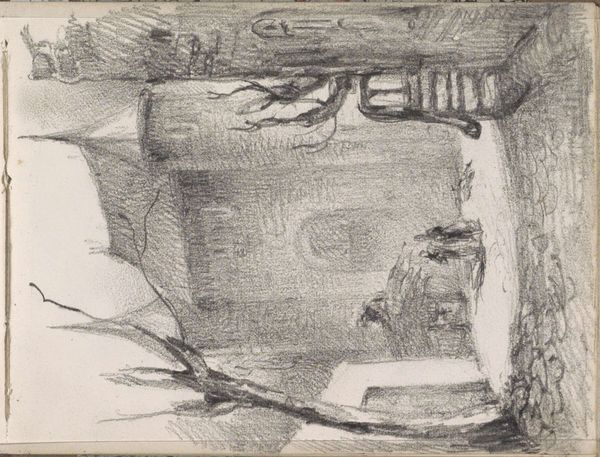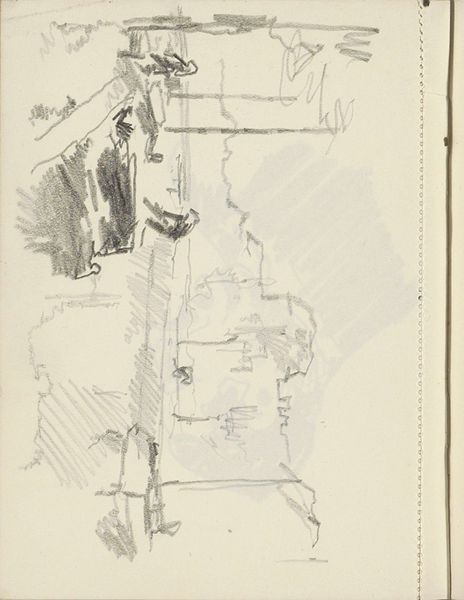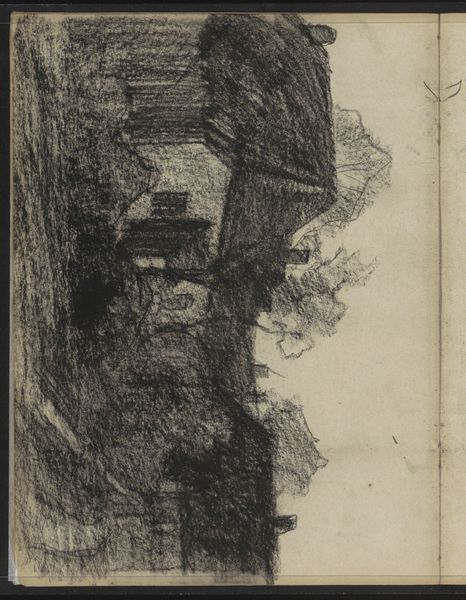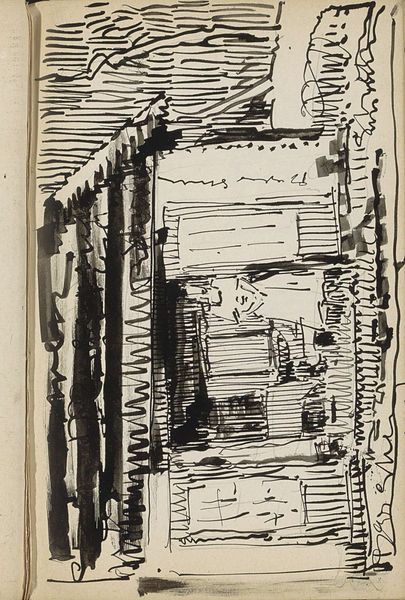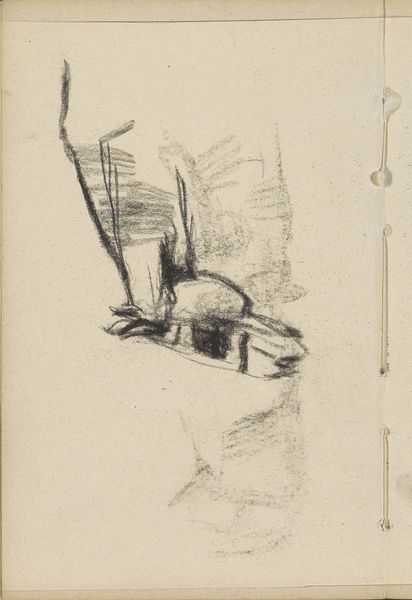
Boederij met een rieten kap en een waterput in Noord-Brabant 1839
0:00
0:00
johannestavenraat
Rijksmuseum
drawing, pencil
#
drawing
#
amateur sketch
#
toned paper
#
light pencil work
#
16_19th-century
#
pencil sketch
#
sketch book
#
landscape
#
personal sketchbook
#
detailed observational sketch
#
pen-ink sketch
#
pencil
#
sketchbook drawing
#
sketchbook art
#
realism
Copyright: Rijks Museum: Open Domain
This is Johannes Tavenraat's "Farmhouse with a thatched roof and a well in North Brabant", a graphite drawing on paper. The composition is dominated by the thatched roof, a massive form rendered with dense, swirling lines. This contrasts with the angular, linear precision used to depict the farmhouse walls and well structure. The interplay between organic and geometric forms is central to the drawing's structure. The thatched roof, with its almost chaotic texture, appears to swallow the more rigid, man-made elements of the farmhouse. This juxtaposition creates a visual tension that destabilizes any clear distinction between nature and architecture. The linear perspective flattens, and the composition challenges traditional landscape representation. Tavenraat uses graphite to create a semiotic system of light and shadow which invites interpretation. The thatched roof may symbolize nature's dominance over human structures, a commentary on the integration of human life with the natural world. The drawing challenges fixed meanings and opens up an ongoing dialogue between form and interpretation.
Comments
No comments
Be the first to comment and join the conversation on the ultimate creative platform.


